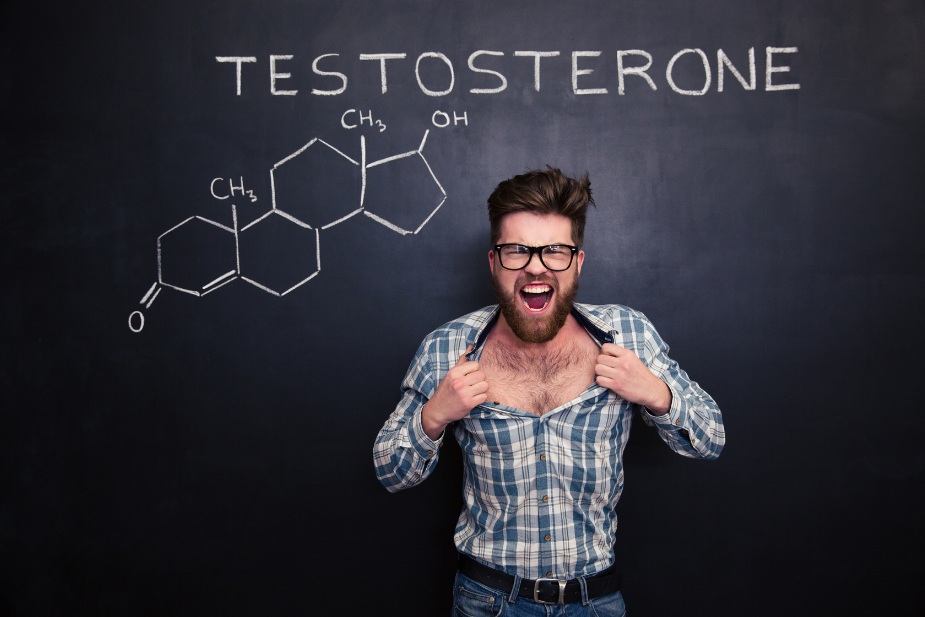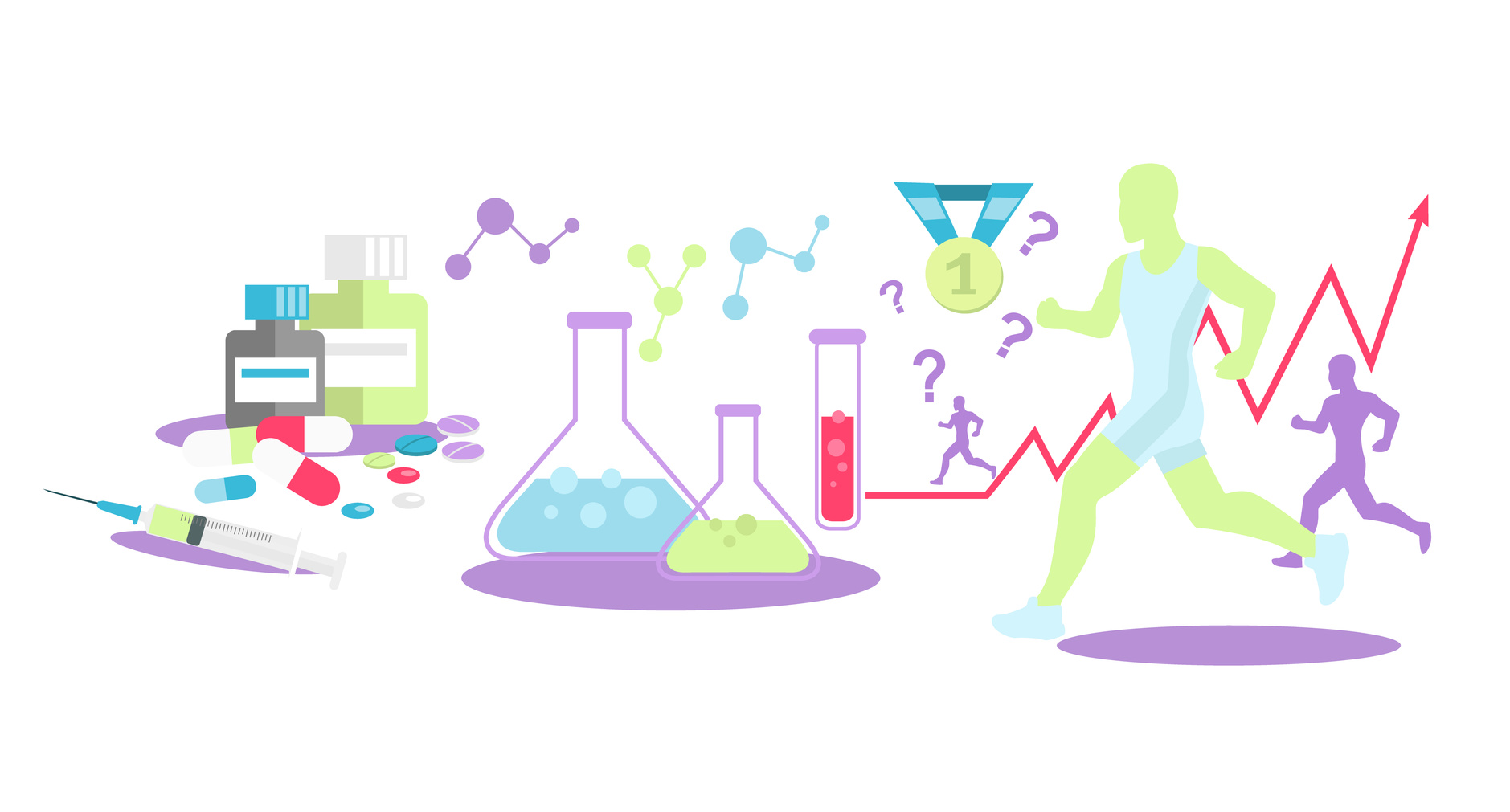For centuries, the differences between men and women have been philosophically, religiously, socially, scientifically, and (*ahem*) physically explored in search for answers we’re not entirely sure exist.
Fortunately, one insight we’ve stumbled upon in recent history:
Men have testosterone. Women have estrogen.
![Venus and Mars by Sandro Botticelli [Public domain], via Wikimedia Commons](https://supplementsinreview.com/wp-content/uploads/2016/05/800px-Venus_and_Mars-300x120.jpg)
However, with this discovery came the frightening realization that for men there’s a lot riding on testosterone: Muscle mass, strength gains, weight distribution, sexual health, mental health… Leading to the question: In the absence of T, do these benefits disappear?
Do men suddenly shift genders?
Not entirely, but something close to “biological emasculation” does occur in the mid-to-late stages of a man’s life as hormonal decreases in testosterone induce a series of negative health effects that can be attributed to andropause—essentially the male counterpart to menopause.
Thankfully, T-boosters may help. Encompassing a wide range of male-enhancing compounds, T-boosters address the symptoms of “low T” through a number of diverse bio-activities. And as T-booster research continues, even more T-boosters are being recognized and added to the growing list of compounds that help reduce the inevitable reduction of T.
As a result, this guide is intended to condense the growing understanding of T-boosters into a brief, helpful introduction on how they’re believed to work, which ones show the most clinical & anecdotal support, and how you can best take them for optimal male action.
What are Testosterone Boosters?
In a nut shell, testosterone boosters are substances that boost testosterone. Seems simple enough, right? However, boosting testosterone doesn’t immediately qualify an ingredient as a T-booster. There are plenty of other items that can increase T levels that don’t qualify as true T-boosters—namely steroids.
Naturally, in discussions of “what are T-boosters?”, comparisons between T-boosters & steroids serve as the central focus. And for good reason: Both increase T levels, muscle mass, & strength. Both enhance athletic performance. Both enact noticeable changes in male behavior… Yet, the directions they take to achieve these actions have huge implications on how their benefits accompany (and accost) long-term male health.
As we now know, steroids diminish long-term male health for brief, yet highly potent infusions of artificial T levels.
T-boosters, on the other hand, boost natural T production in support of long-term male health.
To avoid being overly didactic, we’ll simply point out that due to this key difference between T-boosters & steroids, it’s no wonder that the former has recently gained recognition & popularity over the latter. Additionally, whereas steroids traditionally appeal to athletes & bodybuilders, T-boosters have established themselves as everyman’s man supplements—offering a broad range of common vitamins, minerals, herbs, aminos, and other compounds that enhance both recreational activity and clinical resistance to male hypogonadism (low T production).
However, before we explore how testosterone boosters work, we need to first explain:
What is Testosterone?
Of course you know what testosterone is… But do you really KNOW what testosterone is?
For the sake of brevity, we’ll begin the question of testosterone with its proper definition:
- Testosterone: a 19-carbon steroid hormone that stimulates development of male secondary sexual characteristics, produced mainly in the testes, but also in the ovaries and adrenal cortex.
The word “testosterone” stems from the Latin testis (meaning “witness,” as in testament—applied to the male testes (pl.), which “bear witness to male virility”) and the scientific sterol—used in biochemical terms to describe “naturally occurring unsaturated steroid alcohols.”
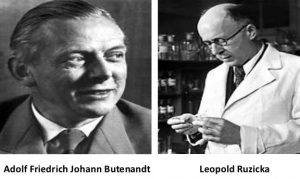 In 1939, the Nobel Prize in Chemistry was awarded to Adolf Butenandt & Leopold Ruzicka for officially “discovering” testosterone through the synthesis of T from cholesterol—which is, more or less, how the body also produces testosterone.
In 1939, the Nobel Prize in Chemistry was awarded to Adolf Butenandt & Leopold Ruzicka for officially “discovering” testosterone through the synthesis of T from cholesterol—which is, more or less, how the body also produces testosterone.
Consequent research found 3 basic types of testosterone in the body:
- Free T. The purest, most active testosterone form. Unbound T is “free” T that floats through the bloodstream, readily available to enact its virile sorcery on the body & mind. Despite its benefits, only 2-3% of total testosterone is “free.”
- SHBG-Bound T. Yet, 40-50% of total T is bound to the sex hormone-binding globulin (SHBG) protein. SHBG is important in regulating and stabilizing optimal serum T levels. The downside: SHBG occasionally operates like an over-zealous hall monitor, biologically inactivating too much T than what’s necessary.
- Albumin-Bound T. Another “T-binding” protein, albumin stabilizes extra-cellular fluid, which may contain T. Unlike SHBG, however, the bond between albumin and T is weak—thus, albumin-bound T is often lumped together with “free” T for its easy conversion to “free” T.
It’s estimated that the body produces an average 7 mg total T daily. However, the natural execution of T synthesis is much more complicated than simply converting cholesterol to testosterone. And it all hinges on the Hypothalamus-Pituitary-Gonadal (HPA) Axis Theory:
- The hypothalamus in the brain detects low T levels in the bloodstream and reacts by secreting gonadotropin-releasing hormone (GnRH), which:
- Signals the pituitary gland, located beneath the hypothalamus, to produce & secrete A) follicle-stimulating hormone (FSH), and B) luteinizing hormone (LH), which travel to the testes (via the bloodstream) to:
- Trigger sperm production (FSH effect) and initiate T production (LH effect) in the Leydig cells (T factories) of the testes, which:
- Convert cholesterol to testosterone, ultimately releasing T into the bloodstream where it either A) binds to SHBG/albumin, or B) does WORK, son.
The excess free-floating T signals the hypothalamus & pituitary to lay off secreting GnRH, FSH, & LH in a feedback inhibition system detailed by this graph:
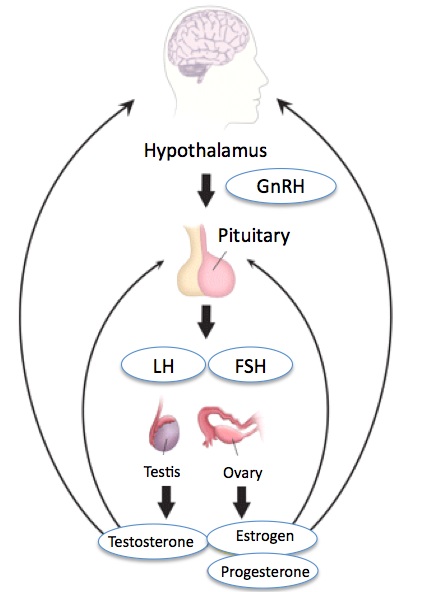
Due to the clever circularity of the HPG pathway, the body can self-regulate T-production on an “as-needed” basis. Unfortunately, any chink in the HPG system can provoke a cascade of disruptive effects, all of which include: Imbalanced T levels.
What about Estrogen?
Typically considered important only to women, estrogens are a separate group of steroid hormones that are critical to male health as well—particularly aging men at risk of T:estrogen imbalance. Yet, due to the gender discrepancy in estrogen production, the fundamental mechanisms of estrogen synthesis & activity differ between men and women.
While women produce estrogen in the ovaries, male estrogen is primarily converted from testosterone via aromatase enzyme activity:
- Therefore, in conditions of excess T, aromatase can produce excess estrogen—which is associated with a range of negative health effects: gynecomastia, depression, sex disorders, heart & prostate issues, so on and so forth. This is why E-blockers (i.e. aromatase inhibitors) are commonly recommended (occasionally required) with T-boosters.
Conversely, insufficient T levels can lead to insufficient estrogen levels in men—the combination of which is the hormonal “DANGER ZONE” of overall male health.
How Do Testosterone Boosters Work?
The HPG Axis illustrates the primary mechanism of T production. In reality, there are many direct & indirect bodily pathways that affect serum T levels. As such, there are many different bio-activities that correlate with boosted testosterone activity.
On that note, not one single T-booster can engage all of the bio-activities involved in boosting T. Even so, the best T-boosters & T-booster stacks work by addressing multiple T-activating pathways at once.
Here are those pathways:
Provide raw materials
You need bricks to build a wall, letters to craft a word, cholesterol to convert to testosterone. Yet, the process isn’t as simple & linear as that and establishes perhaps the largest division between anabolic steroids and T-boosters:
- There are multiple steps of conversion between cholesterol and testosterone—many of which include compounds ending in –one, -ione, -dione, & -diol. These are essentially your anabolic steroids. In this sense, anabolic steroids quite literally are the raw materials of testosterone (albeit in synthetic form), possessing slight variations of enhanced T effects while disrupting natural T synthesis.
![By Leyo (Own work) [Public domain], via Wikimedia Commons](https://supplementsinreview.com/wp-content/uploads/2016/05/Steroid-Synthesis.jpg)
- Consider Zinc, an essential mineral used by the body to facilitate the conversion of cholesterol to T. Compared to anabolic steroids, the action of this T-booster works as a subtle step between the “steps.” Not potent enough to induce overwhelmingly powerful effects, but absolutely necessary all the same for healthy T levels.
In regards to cholesterol, while the positive correlation between high density lipoprotein (HDL) cholesterol & serum testosterone has been established, it remains somewhat shaky whether or not this can be influenced by dietary cholesterol—too many variables (exercise, stress, sleep, fat intake, etc.) intercede the connection between dietary cholesterol and HDL cholesterol levels. So for now take the “cholesterol” you find on the Nutrition Facts with a grain of salt (ha! Food puns).
T-Boosters that Provide Raw Materials:
- Zinc – This manly mineral is required for T-synthesis. No Zinc = No T!
- DHEA – Technically a WADA banned steroid, dehydroepiandrosterone deserves special mention for its growing presence in T-boosting formulas.
Enhance T-synthesis
In the unfortunate condition of low T levels due to decreased T-synthesis (as opposed to inadequate raw material), you’ll want to stimulate the constructive mechanisms of T production.
T-boosters may help.
Whereas “raw material” T-boosters work directly within the construction of testosterone, these T-boosters enhance the framework of T-production—i.e. the “machinery” that manipulates the raw material.
The bio-actions that promote T-synthesis & release include:
- Increased gene expression of T-synthesizing proteins.
- Enhanced biochemical signaling in the Leydig cells.
- Inhibition of rate-limiting compounds involved in steroidogenesis.
Theoretically, it makes sense to stack these T-boosters with raw T material for optimal T-synthesis results.
T-Boosters that Signal T-Synthesis
- D-Aspartic Acid – Promotes cAMP activity in the testes, signaling T-synthesis.
- Vitamin D – Vitamin D receptor sites in testes strongly link D with T-synthesis.
- Vitamin K – Regulates genes involved in the biosynthesis of cholesterol.
Help pituitary gland secrete LH/FSH
In the initial process of the HPG system, the brain (namely the hypothalamus) detects low T levels and effectively releases Luteinizing Hormone & Follicle-Stimulating Hormone. These two hormones carpool down the endocrine highway to engage the testes by:
- LH – signaling the production of T in the Leydig cells.
- FSH – stimulating the initiation of spermatogenesis (sperm production).
![In addition to providing L-DOPA, the precursor to dopamine, Mucuna Pruriens indirectly elevated T levels by releasing LH/FSH Ton Rulkens [CC BY-SA 2.0], via Wikimedia Commons](https://supplementsinreview.com/wp-content/uploads/2016/05/MucunaPruriens-300x225.jpg)
In addition to providing L-DOPA, the precursor to dopamine, Mucuna Pruriens aid T status by increasing LH/FSH activity. By Ton Rulkens [CC BY-SA 2.0], via Wikimedia Commons
Technically, only one of these hormones (LH) actively participates in T-boosting, but both are inarguably integral components of sexual health.
Yet, it’s important to note that decreased LH/FSH action doesn’t necessarily entail decreased LH/FSH levels. Secreting LH/FSH meets only half of the equation. The other half requires the signaling action of LH/FSH in the testes—because of this, it’s best to find T-boosters that accomplish both ends of the LH/FSH spectrum (SEE: D-Aspartic Acid).
Fun Fact: One small study indicates that not only does LH indirectly promote sexual arousal (via increased T), but sexual arousal might influence LH secretion—perhaps reinforcing the age-old “use it or lose it” philosophy? (Cue Mötley Crüe’s “Use it or Lose it”)
T-Boosters that Help Secrete LH/FSH
- D-Aspartic Acid – Also helps the pituitary release Human Growth Hormone.
- Mucuna Pruriens – Significantly increases LH/FSH secretion, supplies L-DOPA.
- Tongkat Ali – Early animal research shows decent hormone optimization.
Inhibit aromatase
Blocking aromatase works as a two-for-one for male health:
- First, it sustains T levels by preventing their conversion to estrogen.
- Consequently, decreased estrogen levels diminish estrogen’s antagonist effects on testosterone.
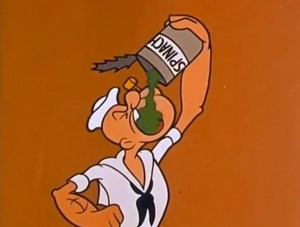
The typical demographics that should be particularly concerned with inhibiting aromatase includes older men who are naturally at risk of increased aromatase activity and intense pro-hormone users (ex. bodybuilders) whose boosted T levels are countered by boosted aromatase action.
This department of T-boosting remains largely uncharted territory for male health seeing as a majority of estrogen-blocking compounds are researched for post-menopausal women’s health. All the same, it’s a currently exciting field of research that bears plenty of potential for both aging & athletic men.
T-Boosters that Inhibit Aromatase
- Luteolin – Well-researched antioxidant associated with manly T:E ratios.
- Resveratrol – Not as potent as pterostilbene, but shows anti-E promise.
- Diindolylmethane – Questionable compound for anti-aromatase action.
Deactivate SHBG
Perhaps the most relevant action of T-boosters is the ability to free testosterone from the clutches of sex hormone-binding globulin (SHBG)—the ubiquitous offender in neutralizing T. As we’ve previously noted, total T is divided into 3 categories: 1) Free T, 2) SHBG-Bound T, 3) Albumin-Bound T—with this last category basically falling in line with “Free T” for its easy-to-break bond.
The idea: Increasing total T net activity by preventing “Free T” from becoming “SHBG-Bound T.”
Thus we have the first category of T-boosters that doesn’t necessarily “boost” T so much as it boosts T activity. We recommend this line of T-“boosters” for older men, who see natural spikes in SHBG, and men undergoing long-term calorie restriction, which has been linked with elevated SHBG.
T-Boosters that Deactivate SHBG
- Boron – Research shows 10 mg Boron significantly boosts T after one week.
- Nettle Urtica – Binds with SHBG, thus inactivating its “T-killing” function.
- Tongkat Ali – Another aspect of TA’s “hormone optimization.”
Block DHT conversion
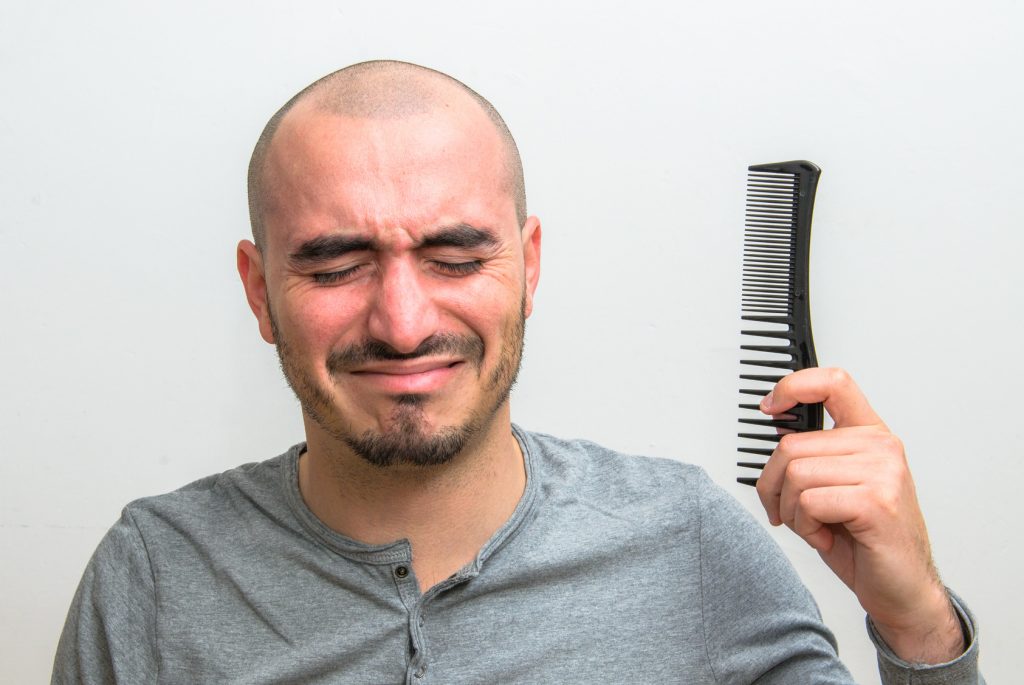
After synthesized, testosterone can convert to three different steroid compounds. In increasing order of “manliness” they are:
- Estradiol – Following aromatase conversion.
- Androstedione – Precursor to T.
- Dihydrotestosterone (DHT) – More active form of T.
So, if DHT is the more active androgen, why would T-booster products include DHT-blockers in their formulas?
Because preventing DHT conversion technically elevates T levels.
Unfortunately, it remains unclear whether or not that’s even a good thing, especially when you consider that DHT works as the primary androgen in male physiology. 5α reductase (5-AR) enzyme converts T to DHT in nearly every part of the body, with exception to skeletal muscle—which more or less explains why DHT-blockers are believed to promote anabolic muscle gains. Therefore, blocking 5-AR potentially increases muscle gains at the expense of potentially decreasing a wide range of other bodily functions.
On the flipside, excess DHT has been linked with poor prostate health and hair loss, the latter condition drawing a lot of attention towards DHT blockers (side effects be damned!).
Check It before You Wreck It: While DHT blocking works for increased T levels, we don’t recommend this pathway to the casual T-boosting man. The reason being: Messing around with your DHT levels can actually lead to a net loss of masculine health, which, we don’t need to point out, is counter-productive here. Several DHT bio-actions include:
- Promoting male genitalia development
- Supporting male fertility & reproduction
- Reinforcing key male attributes such as a deep voice & facial hair
If you think you suffer from excess DHT levels, set an appointment with your physician and/or endocrinologist to verify this before jumping on board the anti-DHT train.
T-Boosters that Block DHT Conversion
- Fenugreek – Research found reduced DHT levels by 9.42%.
- Nettle Urtica – Promising candidate for “antiandrogenic” DHT blocks.
- Pumpkin Seed Extract – More often utilized in “hair loss” products.
Reduce stress hormones
During moments of flight-or-flight, testosterone production is not a priority for your body.
Instead it opts for a separate steroid: Cortisol.
Cortisol works as the “stress hormone” of the body, released from the adrenal glands located on the kidneys, triggered by a system similar to the HPG axis—the Hypothalamus-Pituitary-Adrenal (HPA) Axis.
![By BrianMSweis (Own work) [CC BY-SA 3.0], via Wikimedia Commons](https://supplementsinreview.com/wp-content/uploads/2016/03/HPA.jpg)
As such, adaptogenic T-boosters that directly & indirectly reduce cortisol levels potentially increase circulating testosterone (in addition to inhibiting cortisol’s catabolic muscle effects).
T-Boosters that Reduce Stress
- Ashwagandha – KSM-11® brand shows T-boosts by 17%.
- Rhodiola – Powerful adaptogen that enhances many effects, including T.
- Panax Ginseng – Aphrodisiac benefits supported by anti-stress action.
T-Booster Benefits
If artificial steroids help build artificial muscle & strength, then natural testosterone boosters help build natural muscle & strength… and then some. Through the abovementioned pathways, T-boosters engage T-production in a way that raises the bar on your manly potential while keeping undesirable hormonal side effects at a healthy minimum.
Following is a general list of male health benefits that have been biologically, clinically, & anecdotally associated with T-boosters. Enjoy:
Sex Drive
While low testosterone isn’t the only cause of low libido, research suggests of a strong correlation between active serum T levels and sex drive. Many T-boosters sell, because well… sex sells. And through reinforcing sex cells, increasing energy, reducing libido-killing stress, enhancing penile rigidity, and, of course, boosting testosterone, T-boosters make for an exciting, healthier alternative to those little blue pills that were all the craze a decade or so ago.
Muscle Mass
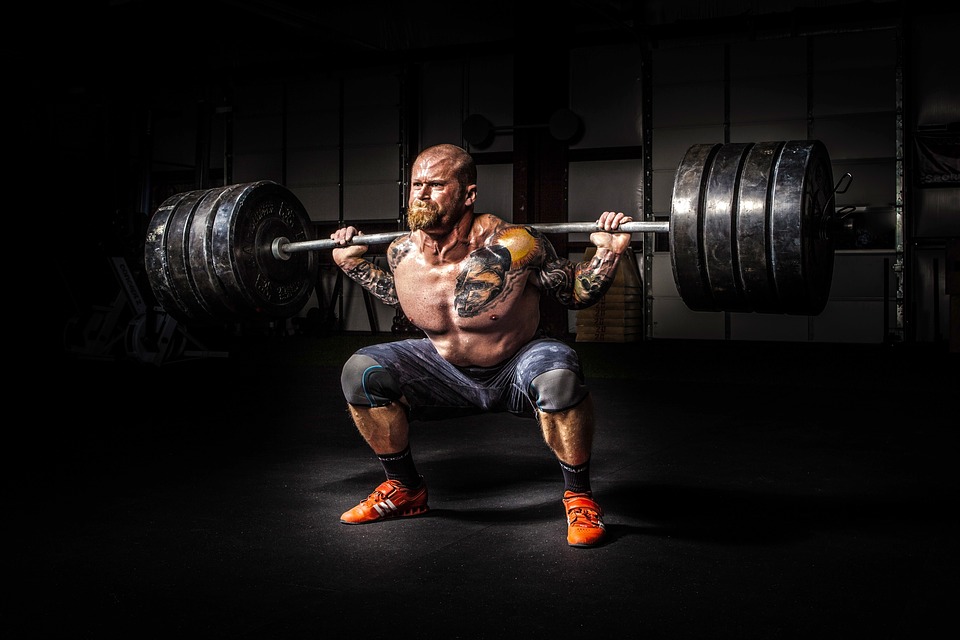
Arguably, one of the precursors to sex is having large muscles—although men have been known to increase muscle mass for other, “purer” reasons: Personal health, athletic performance, functional performance, etc. etc. Acting as the primary androgen of skeletal muscle, testosterone aids muscle mass by signaling protein synthesis and promoting tissue regeneration. T-boosters that can balance androgen ratios are especially pertinent for anabolic strength gains.
Fat Loss
In the absence of T, the body gets (for lack of a better word) flabby. Furthermore, a flabby body promotes the depletion of T due to the high content of aromatase in body fat—if left unchecked, the estrogen in your beer gut can quickly transition to man tits. While research shows that T significantly increases adipose metabolism (particularly in abdominal adipose tissue), T-booster users can expedite the fat burning process by mixing supplementation with exercise.
Bone Strength
Interestingly, estrogen plays a larger role than testosterone in bone formation, suggesting of a complicated interplay between T & E in regards to bone strength. Yet, while research shows that estrogen is the “dominant sex steroid regulating bone resorption,” an imbalance between T & E may have dire consequences on bone health. Outside the hormonal spectrum, T-booster Vitamin D can support bone health by increasing calcium absorption.
Sperm Quality
![By R. Gopakumar [2] [CC BY-SA 3.0 or GFDL], via Wikimedia Commons](https://supplementsinreview.com/wp-content/uploads/2016/05/Cognition-Libido-300x300.jpg)
Mental Clarity
Believe it or not, testosterone does more than fuel muscle mass, strength, & sex. Due to the many T receptors in brain cells, testosterone levels can also have a major impact on brain structure & mental health. In one study, increasing T seemed to improve the following mood parameters: anger, awareness, irritability, energy, sadness, fatigue, anxiety, and feelings of wellbeing. Furthermore, one of the primary causes of depression among men has been linked with low testosterone, although the exact mechanism remains unknown.
Cardio Health
Universally, men experience coronary issues on an approximate 2:1 ratio relative to women. Initially, this lead to the assumption that testosterone exerted a detrimental influence on the CV system. As it turns out, the opposite is true: It’s the absence of T that negatively affects CV health. Increasing evidence suggests that the buildup of atherosclerotic plaque can be alleviated by increasing serum T levels.
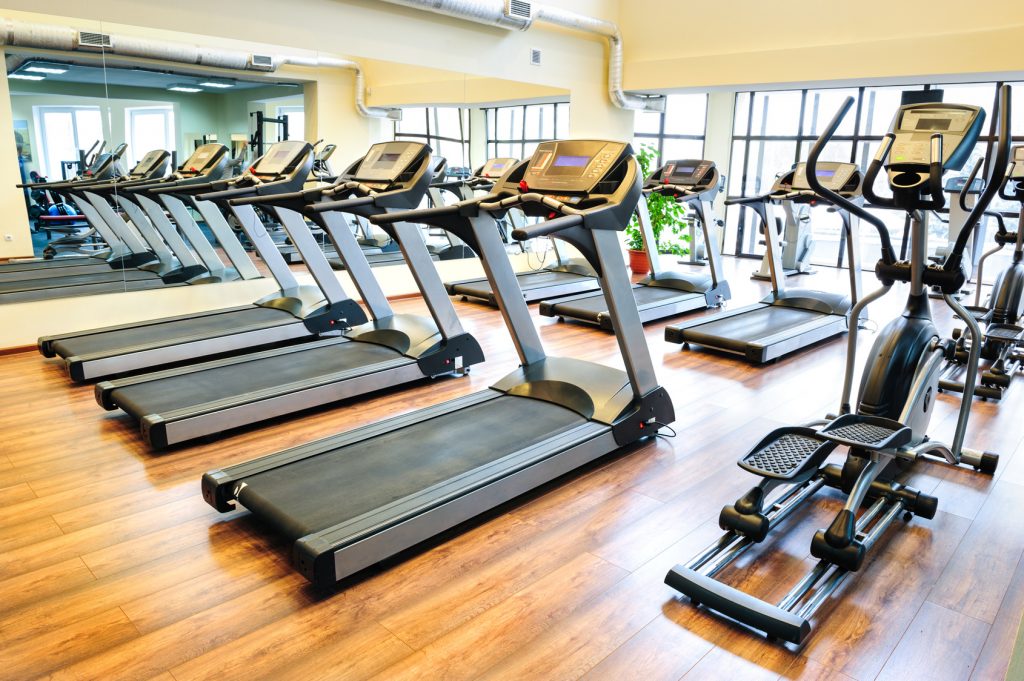
Vitality Levels
The overall advantage of the previous 6 benefits combine to give you access to the BIG one: Vitality. That elusive concept of vitality, which is defined as “the state of being strong & active,” becomes much less elusive with T-boosters at your disposal. By optimizing & balancing all of the working parts that constitute male health (testosterone, estrogen, DHT, SHBG, aromatase, etc. etc.), T-boosters can help you restore your vitality to a youthful state.
Are T-Boosters Legal?
Yes. And this comes with a nearly unanimous “yes” as legality is one of the defining distinctions between natural testosterone boosters and synthetic prohormone substances.
As far as we know, the recreational use of T-boosters is unregulated by any governing food & drug agency. In competitive sport, however, the lines are a little murky.
Of the T-boosters we listed, none are banned by the World Anti-Doping Agency (WADA) as performance-enhancing drugs (PED)—with exception to DHEA, which as we mentioned doesn’t truly qualify as a T-booster anyways. Even so, when substances are used to enhance any degree of performance in a competitive arena—be it football, cycling, or eSports—ethical debates unsurprisingly follow.
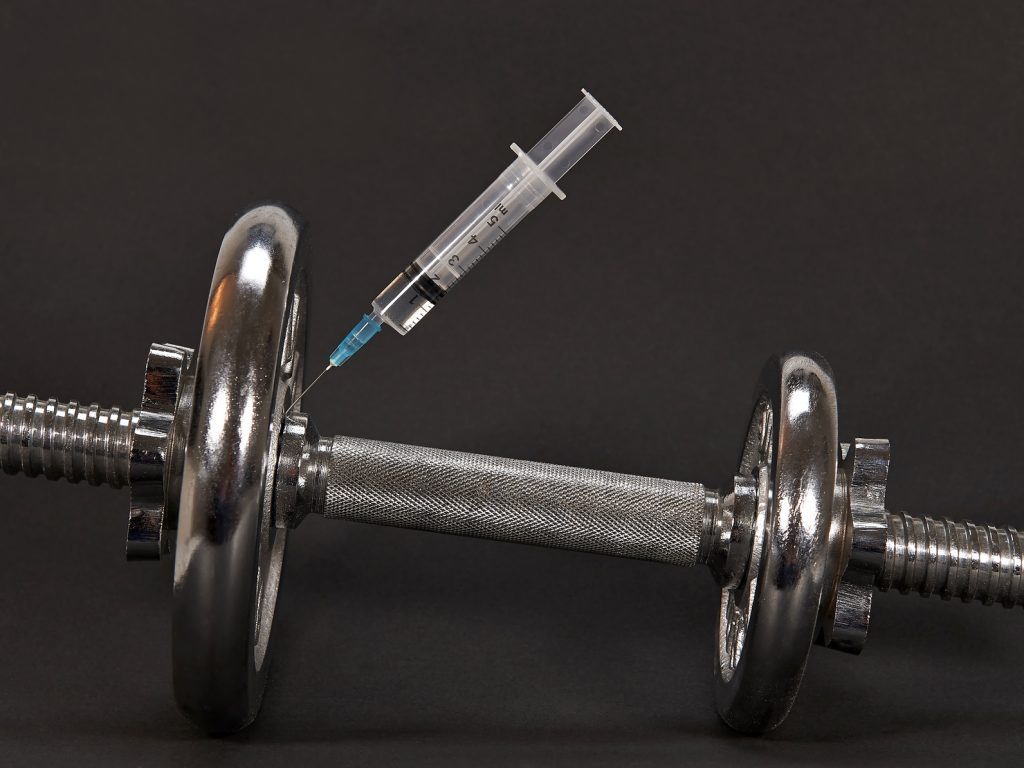
Here’s the “ethical debate” on T-boosters as it stands now:
Can T-boosters enhance performance? Yes.
Then are T-boosters PEDs? No. And there are 2 reasons why:
- T-boosters boost performance within the healthy bounds of normal biology.
- T-boosters aren’t “drugs.” They’re au naturale (or they’re not true T-boosters).
Again, T-boosters support & enhance the body’s natural production of testosterone, the result being more natural testosterone. Steroids & prohormones simply offer the result in an unnaturally powerful synthetic form, often at the cost of the body’s natural functions.
For this, the former is deemed legal and the latter is almost universally banned.
Who Takes T-Boosters?
![By Foto: Bernd Schwabe (Own work) [CC BY-SA 3.0], via Wikimedia Commons](https://supplementsinreview.com/wp-content/uploads/2016/05/Armwrestling-Men-300x199.jpg)
For many men, T-boosters won’t necessarily “boost” T.
They’ll “optimize” it.
And by “many men” we mean “younger men,” because until a boy reaches the manly age of 30, his circulating levels of active “free” T are in their natural prime. As such, his T-producing faculties are in working order and don’t necessarily require the assistance of most T-boosters—with the exception of essential vitamins & minerals such as Zinc, Magnesium, B6, D3, Boron, and so on.
This may come as a disappointment to the “younger men” who expect “beastly” steroid-level effects from T-boosters (minus the steroid-level side effects). Yet, if we’re being honest, “beast mode” is neither sustainable nor healthy in the long-run.
T-boosters, on the other hand, sustain healthy levels of T for the long-run—particularly among older men. After about age 30, testosterone meets the downward-facing end of its parabolic slope, decreasing at an average rate of ~1% per year—otherwise, known as late-onset hypogonadism, which is marked by a natural decrease in vitality, energy, & libido. In these cases, restoring T levels can feel like a physical & mental return to the “good ‘ol days.”
Ultimately, when you compare “beast mode” with prolonged male health, ask yourself what’s more important. If the answer isn’t entirely clear, give it some time… It’ll come.
Controversy: Low T or “Getting Old”?
Although T-boosters are safer than steroids, legally accessible in sport, and effective for mature male health, there still remains the BIG Underlying Question:
If testosterone naturally depletes in old age, then isn’t it unnatural to boost testosterone to “youthful” levels?
In other words: Are there negative consequences to disrupting natural age-related T decline?
After all, it wasn’t too long ago that decreased energy, diminished sex drive, and muscle loss were simply referred to as “getting old.” And while, yes, “getting old” can be the absolute pits, we wouldn’t necessarily qualify it as a “disease” that needs clinical attention. If everyone at a certain point has “low T,” then they also have relatively normal T levels, right?
Right. Even so, the controversy surrounding “boosting T” seems misdirected against T-boosters.
Clarification: T-Boosters vs. TRT
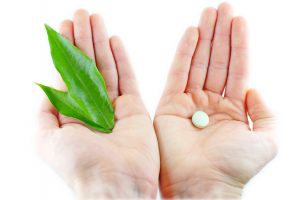
On one hand, labeling the symptoms of “getting old” as “health conditions” promotes exploitation of the natural aging process, turning late adulthood into an (over)marketable avenue. However, this seems to hold true primarily for pharmaceutical T-boosters rather than T-boosting supplements.
Unlike natural T-boosters, pharmaceutical T-boosters used in Testosterone Replacement Therapy (TRT) reverse age-related T decline in a manner that’s A) unnatural, and B) risky. Due to the rising popularity of TRT, the FDA had to issue a warning against prescription testosterone products, requiring that they revise their labels to include “information about a possible increased risk of heart attacks and strokes in patients taking testosterone.”
As a result, caution against TRT has leaked into T-boosting supplementation, despite their differences. As we’ve mentioned, most T-boosters are natural and nutritional—many of which are compounds derived from ancient medicinal herbs and Earth-grown foods. Deprivation from this category of T-boosters seems to run closer to malnutrition rather than “non-treatment.” Compared to TRT, these compounds naturally restore T levels with minimal side effects.
Which, thus, begs another question:
Do T-Boosters Have Side Effects?
First things first: The answer we give here isn’t a catch-all for all T-boosters.
Due to the difference of pathways engaged by T-boosters, there is no single category of effects (and therefore side effects) that adequately sums up T-boosters as a whole. Yet, some may argue that if boosting testosterone is the ultimate effect of T-boosters, then side effects pertaining elevated T levels apply to all T-boosters.
Not true. While the negative conditions associated with steroids (mood swings, irritability, estrogen imbalance, acne, etc. etc.) can apply to a certain degree to the heavier, more potent T-boosters, they’re statistically rare and easily avoided.
For the most part, T-boosters are safe & well-tolerated, but when boosting testosterone it’s always smart to consider these risk factors:
- Age – 30-40+ men achieve the highest, safest results.
- Gender – Generally, T-booster products aren’t recommended for women.
- Dosage – The most common offender here: T-boosting too much at once.
- Frequency of Use – T-boosting too often and without proper cycling is risky.
- Ingredient Quality – Poor extracts & forms run a higher risk of adverse effects.
- Ingredient Interactions – Not all T-boosters work and not all T-boosters work well together.
By considering these risk factors and sticking to the “Directions for Use” on your T-boosting product, side effects should range from low to non-existent. Granted, many T-boosters lack the clinical weight to determine long-term safety & tolerability—but many are also backed by centuries of safe practice.
What is T-Booster Stacking?
![By Selvammk (Own work) [CC BY-SA 3.0], via Wikimedia Commons](https://supplementsinreview.com/wp-content/uploads/2016/05/Lagori-179x300.jpg)
- Multiplying Effects – By combining ingredients that attack the same aspect of male performance (ex. libido) through different T-pathways.
- Synergetic Amplification – By mixing compounds that facilitate & enhance the bio-effects of each other.
- Complementary Benefits – By completing some unfulfilled bio-effect of a nutrient with that of another.
These three points mark the distinction between an ineffective, poorly-designed formula and a fully-optimized, well-rounded T-booster. And while it may be hard to initially judge the “stack quality” of a pre-made T-boosting product, it seems the safer T-boosting route than personally mixing standalone ingredients into your own “home-made” T-booster.
If stacking offers three potential advantages, it also has its potential drawbacks: Bad ingredient interactions, competitive nutrient absorption, redundant effects, etc. etc. Sticking with quality pre-made (ideally, clinically-studied) formulas seems the best option for avoiding the negatives of stacking.
What is the Best T-Booster?
Considering the varied functions & benefits of T-boosters, does this question even have an answer? Everyone has their preferences, yet we realize that what works for one man might fail for another. Some T-boosters inhibit aromatase, others promote LH. Some require “on-&-off” cycles, others need long-term supplementation. Whatever T-booster works for you is the T-booster that’s best for you… Yet, here are our choices:
Best Individual T-Booster
D-Aspartic Acid as D-Aspartic Acid Calcium Chelate (D-AA-CC). Aside from the essential vitamins & minerals, this amino acid qualifies as our #1 recommended T-booster. D-AA benefits male health in many different ways, targeting T-synthesis via various hormonal pathways. Furthermore, it triggers Human Growth Hormone (HGH) synthesis in the pituitary gland, making it a major anabolic compound as well.
Best Premade T-Booster Stack
We like Prime Male. Guess why? D-Aspartic Acid. But that’s not all: Departing from typical “beast-bro” T-boosting formulas, Prime Male takes a multi-layered, synergetic approach to youth-restoring T gains with proven ingredients that not only work—Magnesium, B6, D3, Boron, Ginseng, Luteolin, Mucuna Pruriens, more—but work well together. We mentioned the 3 potential advantages of stacking: Multiplying Effects, Synergetic Amplification, & Complementary Benefits. Well, Prime Male has all 3 of them.
Conclusion
Clinically, testosterone represents an important key to masculine functionality: Sexual health, physical prowess, mental confidence, and youthful vitality. In a medical sense, testosterone is the distinguishing factor between a healthy male physiology and a diminished one.
Culturally, testosterone symbolizes man in his entirety—in all of his hairy, beer-drinking, sports-loving, ego-centric, emotionally-impaired glory. “Testosterone” sets the spoken difference between behaving aggressive & square-headed vs. reasonable & caring. In the words of the notorious Al Goldstein, “testosterone is doom.”
However, testosterone’s elevated status here is a little misguided, because the truth is:
Testosterone is just a hormone.
An incredibly important hormone, yes—absolutely essential to male health—but, clinically, it’s not the only key to masculine functionality, and, culturally, it doesn’t fully represent “man in his entirety” (women, after all, require T for feminine functionality, as well). While many male-enhancing supplements will try to convince you that they’ll “make a man out of you,” that’s not true. Your manhood has more of an effect on what you’ll do with a T-booster rather than the vice versa.
Which brings us to the classic, cliché paradox: It takes a man to take care of his manhood.
With T-booster supplementation, this is no exception. Compared to steroids, T-boosters are not only effective, but safe, well-tolerated, and broad in their list of effects. And the best are either backed by clinical research or simply waiting for the science to catch up to their legendary, time-tested benefits.
Lucky for you, you don’t have to wait. We have them all right here.
